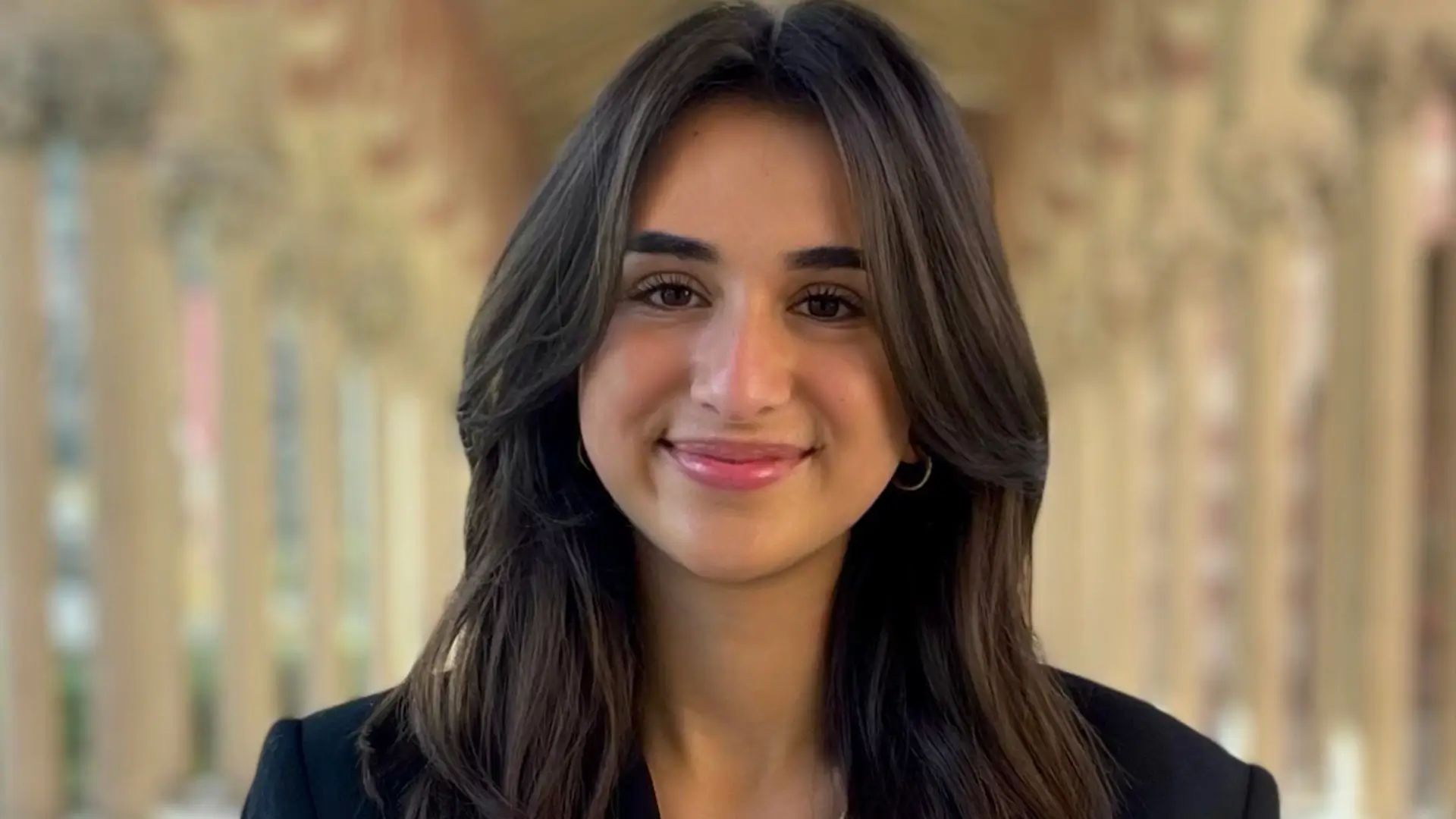Aleena Imran is a dual-degree graduate in Electrical and Computer Engineering and Biomedical Engineering from USC, and was Commencement Speaker for the Viterbi School of Engineering ceremony in 2025. During her speech, she talked about her research in developing hardware that captures signals from the human body, and namechecked Dr. Leslie Saxon, Founder and Executive Director, USC Center for Body Computing (part of ICT) as a valuable mentor during her time at USC. We asked her to write an essay to tell us more about her work – and her collaboration with Dr. Saxon.
BYLINE: Aleena Imran, dual-degree graduate, Electrical and Computing Engineering and Biomedical Engineering, USC
My academic path has been shaped by the intersection of technology and human health. Under the mentorship of Dr. Leslie Saxon at USC’s Center for Body Computing, I have been privileged to work on projects that aim to revolutionize patient empowerment through wearable medical technology—endeavors deeply inspired by my family’s own encounters with chronic illness.
Receiving honors such as the W.V.T. Rusch Engineering Honors, the Albert Dorman Future Leadership Award, the Viterbi Impact Award, and being named an Exemplary Grand Challenges Scholar reflects not only my dedication to rigorous research but also my commitment to translating innovation into tangible societal impact.
Towards a Unified Wearable Health Patch
Current wearable devices often serve narrow functions: continuous glucose monitors track metabolic markers, while ECG patches focus solely on cardiac rhythms. This fragmentation leaves patients and clinicians with isolated data streams, hindering the comprehensive understanding of complex physiological interactions. For example, the relationship between glucose fluctuations and cardiac arrhythmias remains poorly characterized, in part due to the lack of integrated sensing platforms.
To address this critical gap, I led the design of a multifunctional, skin-conforming health patch that seamlessly integrates continuous glucose monitoring, electrocardiogram, pulse oximetry, lactate, and ketone sensing into a single waterproof device. This patch aims to empower diverse populations—ranging from diabetics and chronic disease patients to athletes and military personnel—with holistic, real-time insights into their metabolic and cardiovascular health.
My role encompassed hardware research, including schematic design and PCB layout for biosensor integration, optimizing signal fidelity while maintaining patch flexibility, and selecting skin-safe, hypoallergenic materials that ensure waterproof adhesion and resistance to motion artifacts. In parallel, I developed the data architecture for low-power Bluetooth Low Energy transmission and mobile/cloud synchronization, envisioning user-friendly dashboards to contextualize health metrics.
Collaborations with engineers from Abbott and Apple, as well as feedback from USC faculty, refined the clinical relevance and feasibility of the project. Dr. Saxon’s mentorship was invaluable in encouraging a translational mindset that extended beyond the lab to consider pathways for commercialization and real-world deployment. Through this work, I encountered and overcame challenges related to signal interference, power optimization, and user comfort, all of which are paramount to creating a wearable that patients can rely on daily.
The potential impact of such an integrated patch is vast: enabling novel research into real-time metabolic-cardiac correlations, delivering personalized chronic disease alerts, and improving athletic performance feedback. Ultimately, this device represents a step toward continuous, contextual, and proactive patient monitoring that bridges traditional silos in biomedical data.
Designing for the 2028 Olympic Health Monitoring Wristband
Building on the foundation of wearable health technology, I contributed to the conceptualization of a sleek, waterproof wristband for the 2028 Los Angeles Olympics. This device aims to serve a dual purpose: functioning as a secure event credential while simultaneously collecting real-time health data from both athletes and attendees. By integrating biosensors that monitor skin temperature, pulse oximetry, UV exposure, heart rate, and sweat analytes such as alcohol, this wristband could reduce the burden on emergency medical services through early health alerts.
My involvement included technical feasibility assessments, user experience discussions, and ideation on behavioral incentives to encourage adoption, including gamification and perks. I proposed geolocation tagging of physiological data to enable targeted health responses within stadium environments and to inform urban design and climate adaptation strategies.
Dr. Saxon guided discussions with public exchange leaders and recommended collaborations with industry leaders like Apple and Nike, as well as public sector partners, to ensure scalability and sustainability. The broader vision for this project is to create an Olympic legacy: a replicable, open-source health dataset from a large-scale event that bridges technology, public health, and environmental research.
A Personal Mission to Empower Patients
My passion for wearable health technology is deeply personal. Navigating my mother’s breast cancer and my grandfather’s diabetes illuminated for me the often fragmented, reactive nature of modern healthcare around the world.
I witnessed how limited access to clear, actionable biological data can leave patients feeling disempowered and marginalized. These experiences motivate me to develop tools that make health data visible, understandable, and contextual, especially for underserved populations.
Looking Ahead: From Engineering to Global Health Leadership
I aspire to apply my interdisciplinary training to global health challenges by working with organizations such as the World Health Organization. My goal is to deploy affordable, reliable diagnostic wearables in rural and low-resource settings, ensuring that innovations are not only engineered but also trusted and effectively implemented. By combining design thinking with electrical, computer, and biomedical engineering, I hope to build context-aware diagnostics that integrate seamlessly with public health systems and influence policy.
In this evolving landscape, where technology increasingly intersects with human wellbeing, I am committed to bridging engineering and medicine to create a future where patients are truly empowered by their own data—and where health technology advances equity, accessibility, and proactive care.
//
